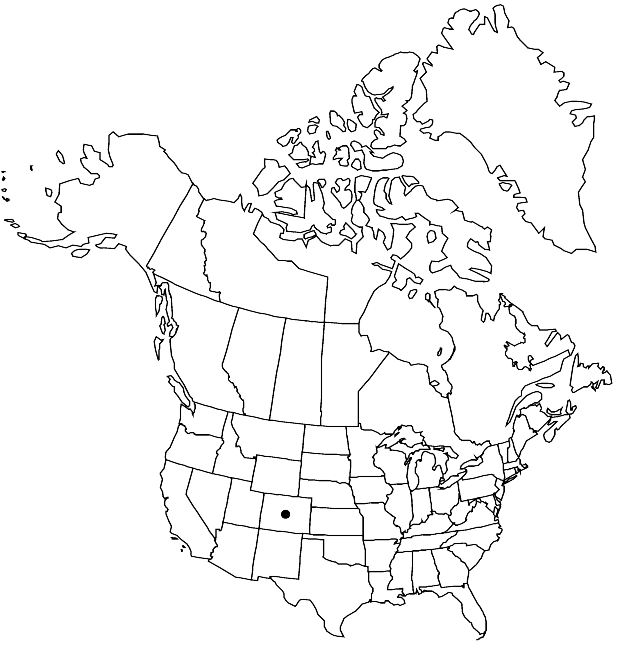Difference between revisions of "Physaria rollinsii"
Canad. J. Bot. 44: 1663, fig. 2, plate 1, fig. 4. 1966.
FNA>Volume Importer |
imported>Volume Importer |
||
| (One intermediate revision by the same user not shown) | |||
| Line 46: | Line 46: | ||
|publication year=1966 | |publication year=1966 | ||
|special status= | |special status= | ||
| − | |source xml=https:// | + | |source xml=https://bitbucket.org/aafc-mbb/fna-data-curation/src/2e0870ddd59836b60bcf96646a41e87ea5a5943a/coarse_grained_fna_xml/V7/V7_1125.xml |
|tribe=Brassicaceae tribe Physarieae | |tribe=Brassicaceae tribe Physarieae | ||
|genus=Physaria | |genus=Physaria | ||
Latest revision as of 22:30, 5 November 2020
Perennials; (compact); caudex usually simple, (cespitose); (silvery) pubescent throughout, trichomes 6–8-rayed, rays furcate near base, fused at base, (umbonate, strongly tuberculate throughout). Stems several from base, decumbent, (unbranched, slender), 0.5–1 dm. Basal leaves (strongly rosulate); blade usually oblanceolate or broader, sometimes triangular, 2–3.5 cm (width 5–10 mm), margins entire or with 1 or 2 broad teeth, (apex acute). Cauline leaves: blade oblanceolate, 1–1.5 cm (width 2–4 mm), margins entire, (apex acute). Racemes congested, (elongated moderately in fruit). Fruiting pedicels (spreading, straight or somewhat sigmoid), 5–8 mm. Flowers: sepals linear, 5–7 mm; petals spatulate, 8–10 mm, (apex often somewhat truncate). Fruits (erect), didymous, suborbicular, inflated, 2–5(–8) × 4–8(–10)mm, (coriaceous, base slightly cordate or nearly obtuse, sinus obsolete or absent, apical sinus broad and deep); valves (retaining seeds after dehiscence), pubescent, trichomes appressed, (silvery on ovaries and immature fruit); replum obovate to oblong, as wide as or wider than fruit, rarely somewhat constricted basally, apex obtuse; ovules 4 per ovary; style 5–7 mm. Seeds slightly flattened. 2n = 8.
Phenology: Flowering May–Jun.
Habitat: Sagebrush, granitic talus, open knolls, limestone chiprock, steep slopes, clay banks, near granite boulders
Elevation: 2300-2500(-3900) m
Discussion
Selected References
None.
